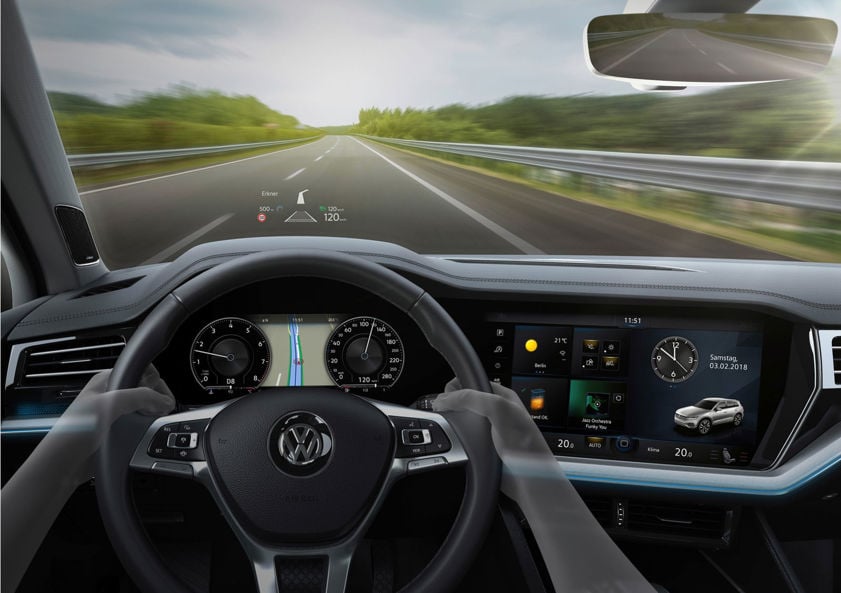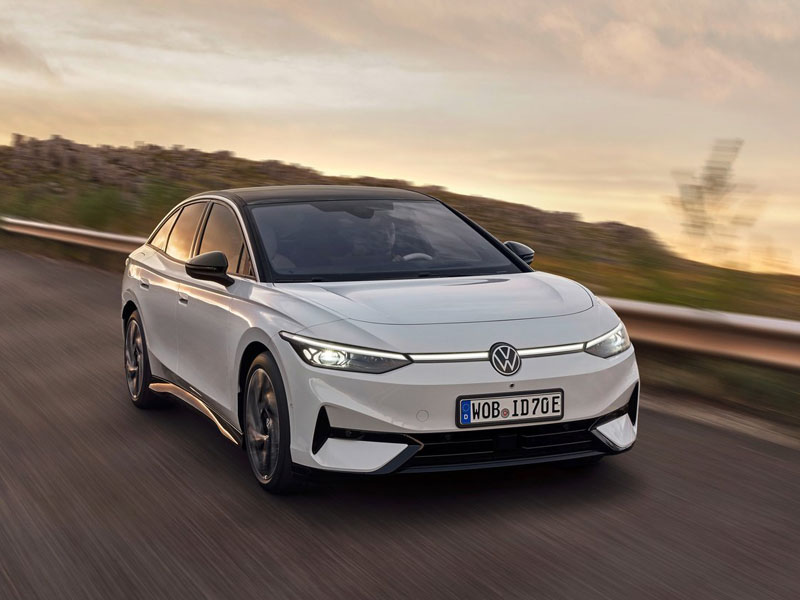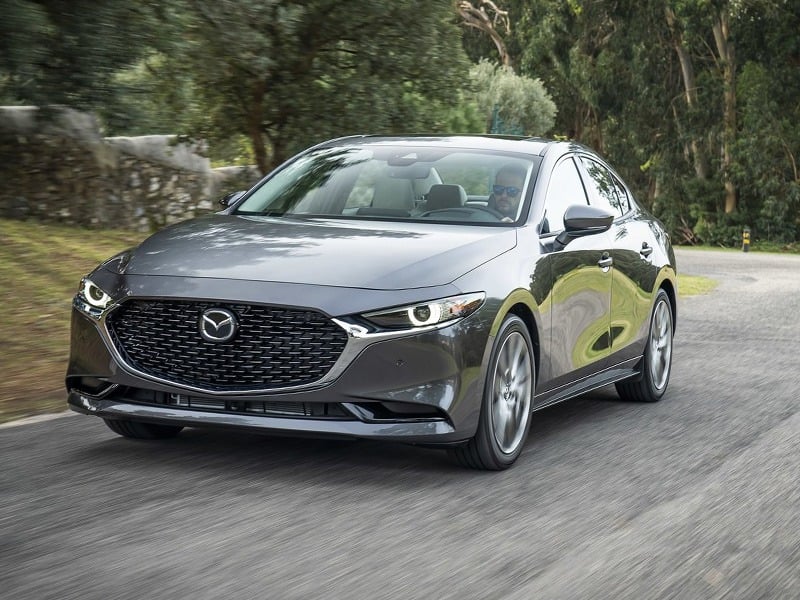
Have you ever glanced down at your speedometer only to realise that the car in front of you has quickly slammed on the brakes? This happens frequently and emphasises how important it is to keep your eyes on the road. This is where head-up displays (HUDs) come in.
Once reserved for prestige cars, HUDs are now popping up across the industry in all sorts of vehicles, like family SUVs, saloons, and estate cars. They’re becoming so popular in fact, that by 2030, it’s predicted that 40% of cars will feature a windscreen HUD (GEM Motoring Assist).
In this blog, we’ll explain what a head-up display is, whether it’s a technology you should consider, and cars with head-up displays in the UK. We’ll also explain why they’re becoming an attractive choice for car leasing customers. We discuss:
A head-up display (HUD) projects key driving information directly into your line of sight, usually on the windscreen or small panel just above the steering wheel. HUDs prevent distractions and ensure the driver keeps their eyes on the road at all times.
Most HUDs display information like:
- Current speed
- Navigation directions
- Speed limits
- Driver assistance alerts
- Warning lights
- Fuel consumption
HUDs are based on a simple idea: reduce driver distractions and make our roads safer. It’s a technology that’s been borrowed from military jets, and as it's improved, it’s made its way from prestige cars to more affordable vehicles.
For anyone considering a car lease, a head-up display will usually be included in the top-spec of a vehicle or as an optional extra. It can really add to your driving experience and ensures you enjoy the latest in-car innovations.

While all HUDs serve the same purpose, there are some differences from manufacturer to manufacturer. There’s two common types of head-up displays:
- Windshield projection - This is the more advanced (and most common) version. It projects data directly onto the windscreen, so it looks like it’s floating above the bonnet.
- Combiner - Instead of using the windscreen, a combiner HUD uses a small panel that flips up from behind the dashboard. Usually found in more budget-friendly vehicles, it still displays all the required information, just not in the advanced way of a projection HUD.
Some newer (and more advanced) HUDs feature augmented reality, which overlays prompts onto the windscreen that aligns with the road ahead. For example, if you’re approaching a junction, the directions will align with this. Trust us, it’s pretty snazzy.

1. Volkswagen ID.7 Hatchback
The ID.7 is a car of the future. A fully electric hatchback that’s slick and full of technology, it gets eyebrows raising. Its augmented reality HUD is fantastic and is undoubtedly one of the best around.

2. BMW 3 Series Saloon
The 3 Series is a car that ticks a lot of boxes. It’s a great choice for pretty much most drivers and you’ll find a head-up display from the M Sport model.

3. Mazda 3 Saloon
The 3 is an affordable hatchback that has seriously upped its game in recent years. It looks great, is brilliant to drive, and features a HUD that’s accessible through smartphone mirroring.

4. Skoda Superb
The Super is a saloon car that’s great for long-distance driving. It has a calm and organised cabin and features a head-up display from the Laurent & Klemin trim.

5. Hyundai Tucson
The Tucson used to be a fairly basic family SUV, but these days are long gone. Combining affordability with upmarket features, its 12-inch HUD ensures you can stay focused on the road.
Leasing tip
Most HUDs come as part of a higher trim or as part of a technology or convenience pack. Leasing gives you more flexibility to upgrade trims thanks to affordable monthly payments.

Like any in-car tech, head-up displays have their advantages and drawbacks. If you’re considering leasing a car with a HUD, consider the following:
Pros:
- More focus on the road - HUDs reduce the need to look away from the road to see your instrument display. It’s a win for both safety and driving confidence.
- Premium experience - It’s pretty cool having a HUD in your car, especially if it comes with augmented reality. It adds a high-end and luxurious feel.
- Good for navigation - You can’t really miss your directions with a HUD as they’re projected directly into your eye line. It makes unfamiliar journeys easier and helps you arrive at your destination on time.
Cons:
- Expensive - HUDs cost more to get as they are common on high-spec and luxury vehicles. In a lot of cases, they are available with an optional pack, which also pushes up the price.
- Takes a while to get used to - If you’re not used to a HUD, it can be overwhelming. If you are driving a car with a HUD for the first time, we recommend adjusting the settings to ensure it’s visually to your liking.
- Is a HUD really needed? - HUDs are great and very convenient, but are they worth the money? Drivers have coped without HUDs for a century.
If you’re after a safer and more convenient drive, a head-up display is absolutely worth considering. They’re more accessible than ever in 2025, and although they bump up the price a bit, they make a genuine difference.
And let’s be honest, they look pretty cool.
Browse our latest deals on tech-packed cars and take your next car to the next level. For more information, check out our prestige lease deals or call us on 0345 811 9595.
Originally posted: 11th November 2024
Last updated: 9th April 2025
Due to be reviewed: 9th April 2026

